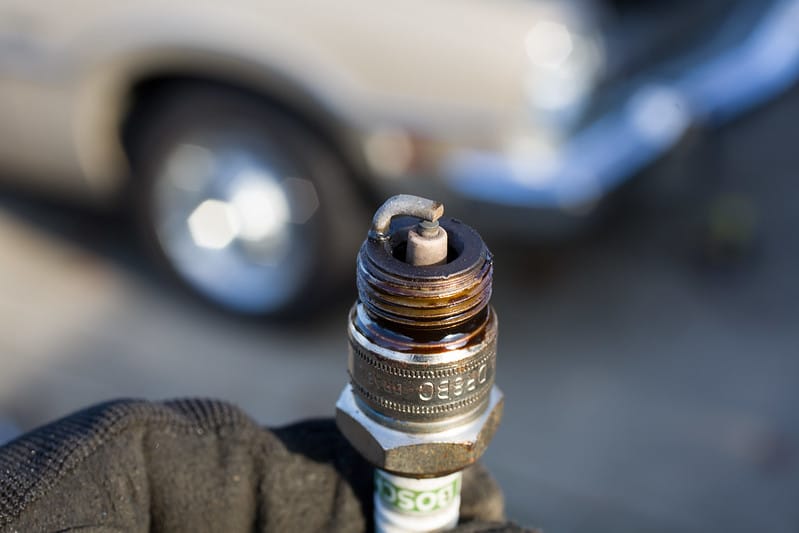Spark plugs are a life source for your car’s engine and it is crucial to keep them in top shape at all times. If your engine won’t start, a dirty spark plug can be one of the possible causes.
As such, you need to clean these essential components in your car regularly to keep them working. On average, a set of spark plugs will offer you around 20k to 30k miles but by cleaning them, you can add a couple thousands of miles to them.
So, just how do you clean a spark plug?... This is where we come in!
There are various ways to clean your car’s spark plugs and this post will tell you how to do just that!
How Do Spark Plugs Get Dirty
When it comes to understanding why spark plugs become dirty, there are a few common culprits. The first is an incorrect setting of the carburetor that results in too-rich a gas-to-air ratio. Other times, faulty valve seals allow engine oil to leak into the combustion chambers and create buildup on the plug. Lastly, prolonged periods without use can cause insufficient temperatures during operation which fails to burn off any residue within air or fuel mixtures lingering near your vehicle's spark plug(s).
Over time, the spark plugs start to accumulate oil or carbon deposits that get them dirty. Although you need to replace your spark plugs once they've run the course of their lifespan, sometimes you may not have a new plug around. In such a case, cleaning and firing the tip of your old spark plug will come in quite handy.
This should be able to get your car engine roaring as usual!
Cleaning a Spark Plug
So, the next time your car’s spark plugs require maintenance, following the guide below:
Removing the Spark Plugs
Step 1: Disconnect the Negative Terminal
Locate the car battery, which is usually either in the trunk or engine case (you can consult the vehicle’s manual if you’re having trouble finding it). Go to the negative terminal (this features a (-) sign on it), loosen and slide off the bolt holding the cable to the battery’s terminal.
Remember to tuck the cable away so that it doesn’t connect to the terminal by accident!
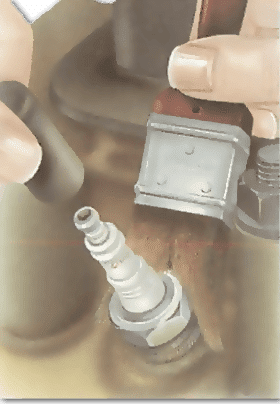
Step 2: Find the Plugs
Ignition coils spark up the engine with a power surge, transferring electricity through thick cables known as spark plug wires. Each cylinder has its cable and plugs tucked away in the head of your car - so if you're having trouble locating them, make sure to consult your owner's manual for additional guidance!
Step 3: Remove Any Dirt on the Spark Plugs
Once you have located the spark plugs, you must first get rid of all the dust and dirt so that they don’t find their way into the cylinders when you remove the plugs. You can do this using compressed air so that any dirt and loose material is blown off completely.
Step 4: Disconnect the Plugs
Disconnect the wires on each spark plug one at a time. This will prevent any confusion when you refit the plugs later. Hold the cable low and firmly, and pull it off the plug. If you pull too high on the cable, you could easily separate the inside of the cable from its plug connector.
Step 5: Unscrew with a Spark Plug Socket
Unlock your spark plug the easy way with a ratchet and socket. First, attach an extension to the end of your ratchet before slipping on a specialized spark plug socket. When it's in position over the plug, give it some torque by spinning anti-clockwise until it loose enough for you to finish unscrewing manually.
Before pulling out the plug, be sure to look around for any objects to avoid the risk of contaminating the engine with such.
Cleaning the Spark Plugs
Cleaning your vehicle’s spark plugs can be done in multiple ways. Let us look at a few methods you can use to achieve this:
Cleaning with a Blow Torch
Give your spark plugs a makeover with heat! Using pliers to securely hold the plug, carefully ignite it with a blow torch for optimal cleanliness. Make sure your hands are safe and secure by using long enough pliers - you don't want any accidents or potential damage from too much grip pressure.
We recommend to use a pair of gloves to add a layer of protection before you start the process.
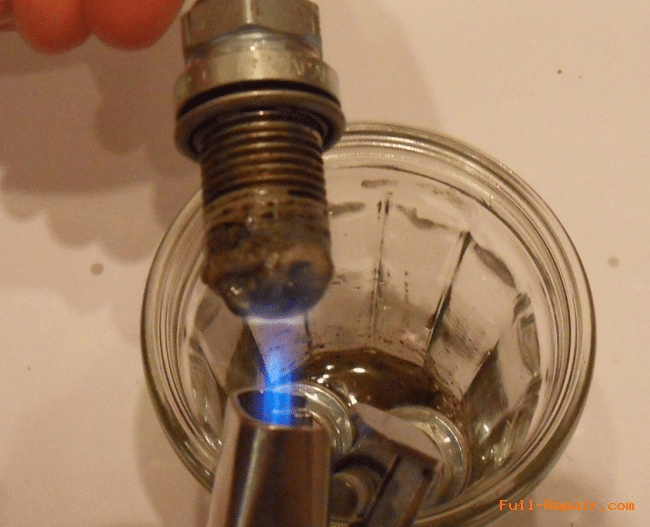
Ignite the blow torch by turning the knob that allows the air to flow in. When the torch has ignited and starts to burn, move the end of the plug inside the flame and hold it till it turns red.
Igniting your car's engine generates high temperatures that the spark plug is designed to efficiently handle. To maintain optimal efficiency, burn through any deposits or dirt on it by rotating from side to side until its electrode glows red-hot!
Finally, remove the plug from the frame and turn off the torch once you see the electrode glowing red hot. Let it sit down for a couple of minutes before you can continue. You can wait five to ten minutes for the plugs to cool down before trying to reinstall them.
Cleaning with Abrasives
Bring forth a smooth finish with 220-grit sandpaper. The electrode, the metal piece extending from your spark plugs - usually black or discolored - is what you must work on; file it until gleaming cleanliness can be seen along its sides using the paper as an aid.
Remove any grime and dirt on the electrode until you feel it is clean enough. You can also use a tiny file to grind away any carbon build-up you see on the electrode. Just position the file in the gap between the electrode and the plug then move it back and forth to clean the metal.
Ensure your plug threads are free from potential gunk and grime build-up by scrubbing them with a wire brush. Take extra care to use the brush at a perpendicular angle for optimal removal of residue that may impede reinstallation success.
Spray the spark plugs with brake cleaner and wipe them down. You can find a can of brake cleaner in your local automobile store and this does a great job of eliminating the grime. Not only that, but it is also quite volatile and quickly vaporizes to ensure the parts dry quickly. Remember to use a clean piece of cloth to wipe off any remaining dirt on the plugs.
When you’re done with the first spark plug, move on to the next and follow the same procedure to ensure you clean them uniformly.
Reinstalling the Spark Plugs
To ensure optimal performance, the correct gap between your spark plug and electrode is essential. Utilizing a specialized gap tool can make it easy to adjust these components precisely - simply refer to the manufacturer manual for specific guidelines on what measurements are required!
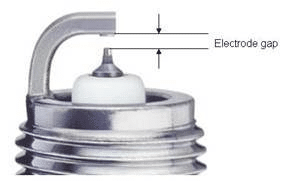
Insert the gap tool between the spark plug and the electrode sticking out to measure the gap. Pry the electrode further if you want to enhance the gap or press it closer to the plug body to reduce the gap until the right measurement is achieved.
Installing a spark plug into an engine can be made easy with the help of rubber grommets. All you need to do is make sure that the threads are facing outward when inserting, and let gravity guide your movements for simple placement.
Use your hand to turn the spark plug clockwise and screw it into the engine. This will ensure that the plugs do not cross-thread, which you might not realize when you forcefully screw the plugs using a socket.
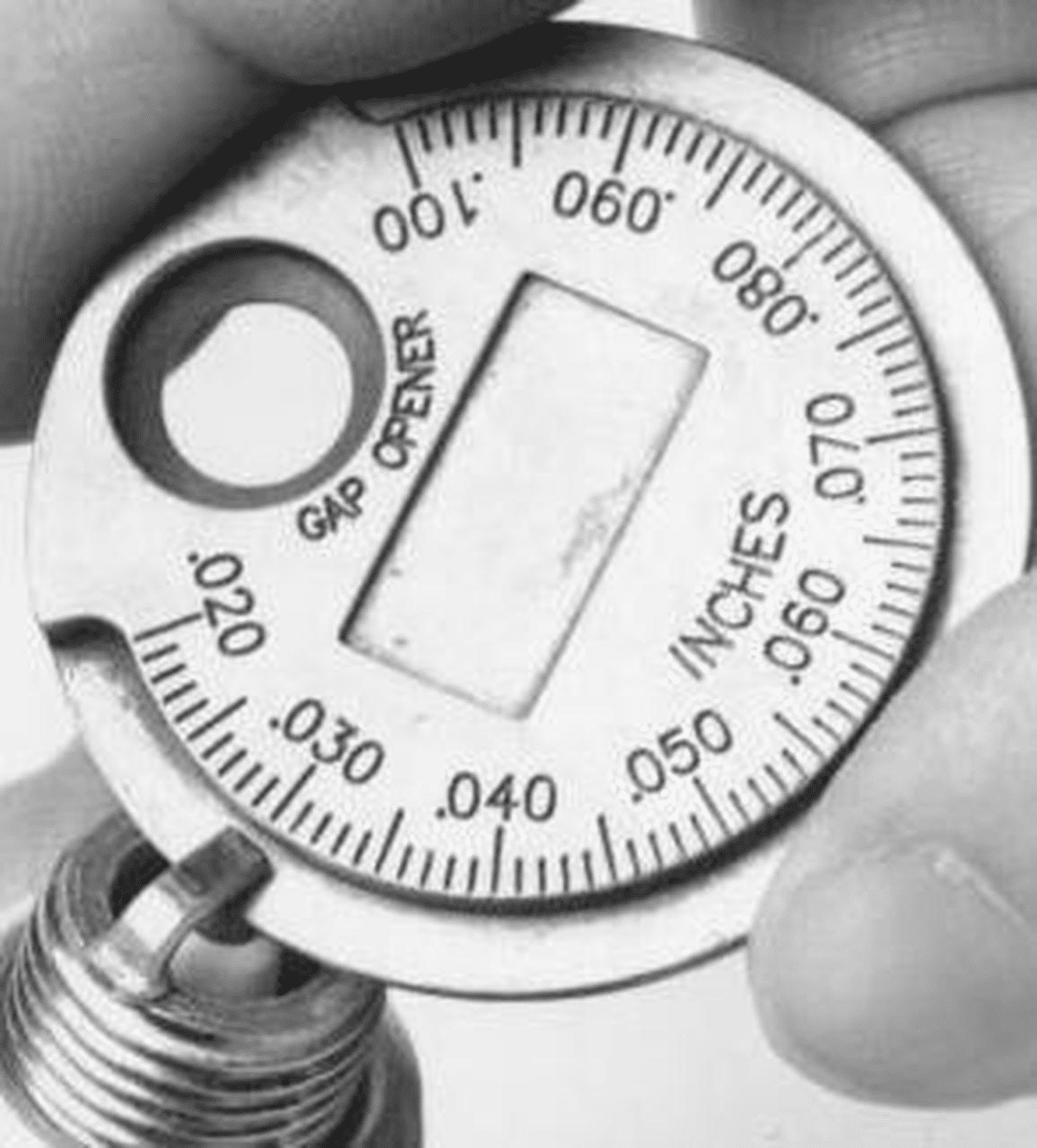
Once you have the spark plug screwed in as desired, you can now use the socket wrench to tighten it.
With the spark plug in place, firmly attach your ratchet to ensure it's secure. Don't over-tighten; just make sure that the plug is held snugly. Then all you need to do is reattach its cables and your ignition system will be up and running again!
Grip the plug cable by the boot and press it into the exposed end of the plug sticking from the engine. Make sure it is firmly in place, which will be confirmed when you hear a notable "pop". Finally, your plugs are now ready to be put in use again!
Final Thought
The next time your engine won’t ignite, be sure to consider dirty spark plugs as one of the possible causes. Luckily, you don't need to go to a professional if that’s the case. The guide above provides you with all the knowledge you require to clean a spark plug effectively.

